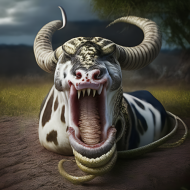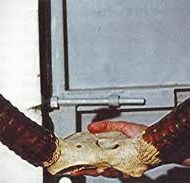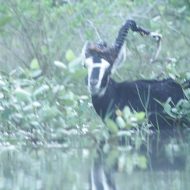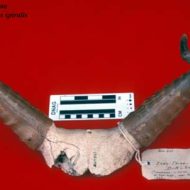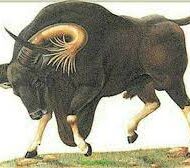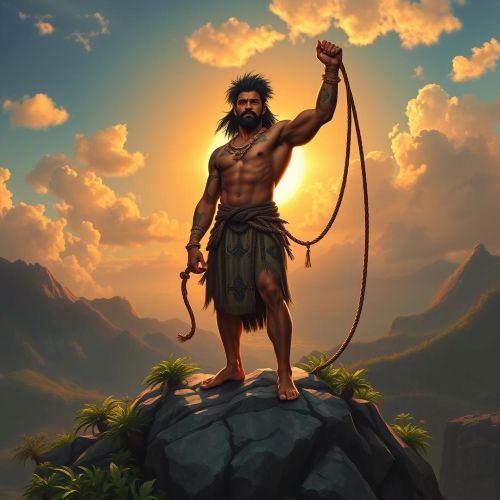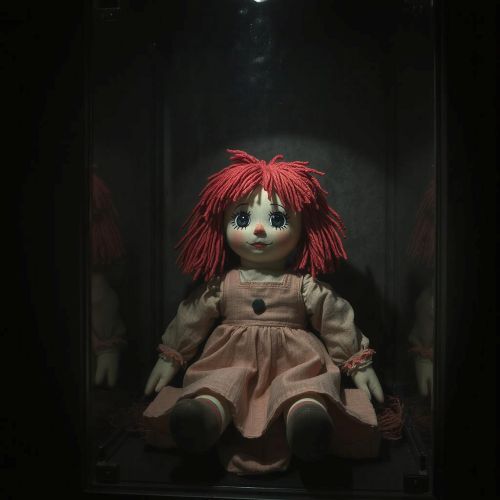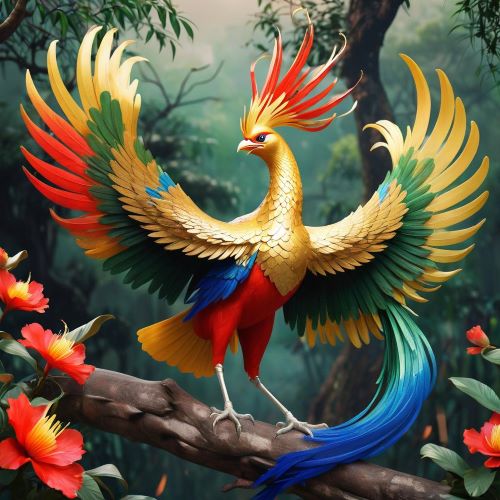Kting Voar : The Snake Eater
Listen
At a glance
| Description | |
|---|---|
| Origin | Vietnamese Mythology |
| Classification | Animals |
| Family Members | N/A |
| Region | Vietnam |
| Associated With | Snake Eating |
Kting Voar
Introduction
It is believed that a creature known as the kting voar lives in Vietnam and Cambodia. Although it is regarded as a type of animal, its existence as a real species is not considered credible. The first proof of its existence was found in 1994 in a market in Ho Chi Minh City.
According to a report from the early 20th century, British hunters were known to kill and shoot kting voar in order to catch tigers as bait. Scientists believe that there’s a good chance that this cryptid did exist, though the odds of it being present today are quite small. In 2020, a cow was seen eating a snake in Australia. This suggests that the stories about this cryptid could be inspired by a rare behavior of a cattle.
Physical Traits
It’s commonly believed that the kting voar is a creature that resembles a cow with long, twisted horns and spotted fur. It’s also associated with snakes in varying ways.
Other names
The animal’s Cambodian name is kting voar. This was mistakenly translated into the West as a “jungle sheep,” which led to the assumption that it was related to goats and sheep. Also, the Vietnamese word “linh dng,” which literally means “antelope,” was used to refer to this creature.
This is a local Kampuchean term used to refer to mainland serow. Other names for this creature include khting ps and kting sipuoh, which are related to the idea of cattle eating snakes. The Latinized version of the genus Pseudonovibos spiralis is invalid since it was previously believed that the animal was a domesticated cow. However, its name suggests that it’s a type of fake cattle with spiral horns.
Powers and Abilities
Not much is known about the Kting Voar other than the fact that it eats snakes. It is also rumoured to stay away from places where it can leave footprints and also disperses its dung with its horns to prevent people from finding it.
Modern Day Influence
It’s widely believed that the kting-voar is a mythical creature. In Kampuche markets, cow horns are commonly sold as an imitation of this animal. Some scientists believe that the folklore around the kting voars is based on a distinct species of wild boar. If this is the case, this animal could be critically endangered due to the destruction of forests and the hunting of big mammals.
Related Images
Frequently Asked Questions
What is lorem Ipsum?
I am text block. Click edit button to change this text. Lorem ipsum dolor sit amet, consectetur adipiscing elit. Ut elit tellus, luctus nec ullamcorper mattis, pulvinar dapibus leo.
What is lorem Ipsum?
I am text block. Click edit button to change this text. Lorem ipsum dolor sit amet, consectetur adipiscing elit. Ut elit tellus, luctus nec ullamcorper mattis, pulvinar dapibus leo.
What is lorem Ipsum?
I am text block. Click edit button to change this text. Lorem ipsum dolor sit amet, consectetur adipiscing elit. Ut elit tellus, luctus nec ullamcorper mattis, pulvinar dapibus leo.
What is lorem Ipsum?
I am text block. Click edit button to change this text. Lorem ipsum dolor sit amet, consectetur adipiscing elit. Ut elit tellus, luctus nec ullamcorper mattis, pulvinar dapibus leo.
What is lorem Ipsum?
I am text block. Click edit button to change this text. Lorem ipsum dolor sit amet, consectetur adipiscing elit. Ut elit tellus, luctus nec ullamcorper mattis, pulvinar dapibus leo.

